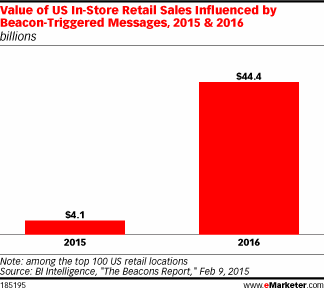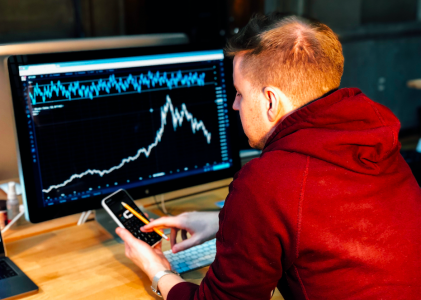You know how to optimize a campaign for clicks or online conversions, but there’s always been something missing… those elusive offline sales. You’ve heard it from clients time and time again, “what about my in-store sales and traffic, can you track that back to my digital campaigns?” but you’ve never really had an answer.
Luckily, marketers and small businesses are finally going to get clarity into how their digital campaigns affect their offline traffic and success.
More “traditional” advertising methods are coming to the online space, and we will also see a pronounced rise in offline tracking methods, according to Aaron Levy, Manager of Client Strategy at Elite SEM
Let’s look into what this means, how these tracking changes affect your business and how you can help clients to understand offline success in a way you never could before.
Offline sales will continue to leak
Click-based tracking has long been engrained in the brain of the PPC marketer. The belief is that more clicks equal more conversions equal more sales and revenue. The problem is, when we focus too heavily on clicks as a success metric or online actions like form fills or checkouts, we “greatly undervalue the offline influence some of these search ads can have,” explains Levy in our recent ebook, Digital and Local Marketing Predictions: 2016, The Year of Audience Targeting in PPC.
Think about people who:
- make a purchase decision online and head into store (reverse showrooming)
- call a company direct
- go through alternate channels
These offline conversions may have been inspired by a PPC campaign. But, without a resulting conversion or landing page completion, the link between digital campaigns and the sales they stimulate is nonexistent.
Thinking in terms of display, the majority of people who see a display ad do not click on it (the industry average is a paltry 0.01% CTR). Yet even “existing tools like YouTube and display (where clicks are notoriously difficult to come by) are undervalued because they’re tied to a click-based action,” says Levy.
Assigning value to impressions or views (in the case of a PPC ad or landing page) does little to help marketers know which ads were stimulating sales, and how many. To really learn about where offline sales are coming from, marketers need to turn to alternative tracking metrics, or “alterna-metrics” as Levy would call them, including revenue per impression, marketing dollar efficiency, and engagement. Levy predicts these methods, along with tracking for in store conversions, won’t be so alternative in the near future.
Alterna-Metrics are set to rise
The success metrics PPC folk measure most often include clicks, conversions, CPC, CPA, and impressions. What makes them so popular is that we have consistent and reliable ways to track these numbers.
Levy envisions a not-so-distant future where less popular metrics like “store visits” will become equally as important — and it’s all thanks to recent improvements in tracking capabilities. Levy refers to the new tracking technology as “alterna-metrics.”
“No longer will ‘alterna-metrics’ be relegated to a non-default column or hidden in the corner; instead, they’ll become core bidding functionality and must use tools,” says Levy, mentioning methods like in-store tracking, beacons and more.
How tracking in stores works
“Store visit” tracking is already in the works at Google, and has been for some time. Here’s how it works.
A person clicks on an ad on their mobile device. If they walk into a store corresponding to an ad they clicked on in the next 30 days, that action is attributed to the ad click. Tracking whether the person went into a store will not be based on any transaction or purchase, and is based on a person’s proximity to the store using their location history on their mobile device.
This is amazing news for marketers who’ve left offline sales out of the equation until now, and will provide much-needed insights into their total marketing and advertising efforts.
iBeacons for iOS 7 or greater go a step further, looking at which aisles and areas of a store a person visited and even how much time was spent in a given department. This level of tracking is used to analyze whether or not a purchase was made, and, if so, what the visitor purchased.
Beacons can showcase relevant ads on a mobile phone, based solely on a person’s proximity to a particular store. Image the possibilities this represents!

According to a report by BI Intelligence and published by eMarketer in February of 2015, there was an approximate value of in-store retail sales of around $4.1 billion in 2015, and that number is predicted to jump to $44.4 billion in 2016. That’s an increase of 982.93%.
Traditional advertising will continue to go digital
We know that tracking methods for in-store visits and purchases are set to pick up speed in 2016. We also know that the itch to move beyond click-based tracking methods is begging to be scratched. But that’s just the tip of the iceberg.
“I predict a meteoric rise in more “traditional” media which is slowly becoming digital,” says Aaron Levy.
One example is Google’s YouTube Red, a paid monthly subscription service with viral hits, music videos and unique shows you cannot find anywhere else. This new subscription service is meant to capture the eyes of cable cutters, giving advertisers more (and better) programming to advertise on.
What’s traditional about Youtube Red? The subscription pricing model mimics that of Netflix, HBO and more, which are definitely the all-stars of the television marketing world.
Another interesting digital parallel is Bing and Yahoo’s expansion into Native advertising, where Levy points out that sponsored content mimics the newspaper advertorials of yesteryear.
The last example Levy mentioned was the most traditional of them all, and that was Google’s expansion and testing of outdoor media buying.

This has huge potential to attract more traditional advertisers to Google, especially those who favor OOH ads over digital.
“[Google] is trialling a method for premium billboard ads to bought programmatically — using DoubleClick’s automated processes, rather than having to manually place an order with an outdoor advertising company upfront — for the first time,” according to report from Lara O’Reilly of Business Insider.
What’s interesting about Google’s interest in billboard ads is that it relies on traditional metrics of success, like estimated eyeballs on an ad, and doesn’t actually bring the marketer closer to knowing how their online and offline sales interact.
What it will accomplish is to bring the digital space, limited to small screens like phones and laptops, to the offline world, while still maintaining the programmatic buying that marketers need.
Tracking the future of offline advertising
Whether you wanted more traditional advertising options, or more offline tracking methods, you can expect to hear more over the coming year, because 66% of marketers believe location-based advertising (including store visits, beacons and more) is the ‘most exciting’ mobile opportunity for 2016, according to a recent IAB UK study.
It may have taken PPC professionals a few years to fully embrace the possibility of mobile marketing (the years 2012-2015 we all called the year of mobile). Let’s be a bit more proactive with these offline and location based advancements.
Start testing offline sales metrics, be at the forefront of these location based tracking movements, and make sure to implement these metrics into your dashboards and reports to understand offline success and the success of more traditionally inspired digital initiatives.
There are a lot of new advancements in digital marketing technology coming in 2016. To find out what you need to know about what’s online and in store (and how to get people in store) in the coming year, download our ebook, Digital and Local Marketing Predictions: 2016, The Year of Audience Targeting in PPC and find out!



